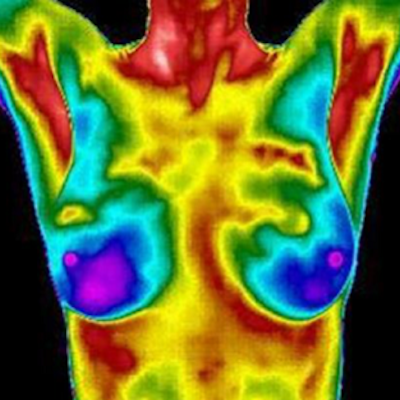Breast Thermogram Risk Assessment
Home » Breast Thermography » Breast Thermogram Risk Assessment
| Rating | Risk | Explanation |
|---|---|---|
|
TH1 |
Lowest Risk |
Bilaterally symmetrical, nonvascular (non-suspicious, normal study). These ratings suggest low risk of current or future breast disease. These ratings do not guarantee that the breasts are disease-free and should not delay any other breast examination recommended by your doctor. |
|
TH2 |
Low Risk |
Bilaterally symmetrical, vascular (non-suspicious, normal study). These ratings suggest low risk of current or future breast disease. These ratings do not guarantee that the breasts are disease-free and should not delay any other breast examination recommended by your doctor. The increase in risk between TH1 and TH2 is minimal. |
|
TH3 |
Medium Risk |
Equivocal. (low index of suspicion). This rating suggests signs of physiologic stress and/or inflammation. It suggests that a patient has a mid-level risk that disease is currently present or may develop in the future. Serial imaging with thermography is recommended in order to determine if the patient’s findings are normal. Other diagnostic tests may be needed if not already done, such as manual breast exam, mammography, ultrasound, and/or MRI. |
|
TH4 |
High Risk |
Abnormal (moderate index of suspicion). This rating suggests substantial signs of physiologic stress and/or inflammation. It suggests that a patient is at high risk that disease is currently present or may develop in the future. This rating does not guarantee that disease is present, and needs to be evaluated by other imaging to determine its significance. Additional testing such as MRI, mammography, ultrasound, tumor markers, manual breast exam or other diagnostic tests should be performed. |
|
TH5 |
Highest Risk |
Highly abnormal (high index of suspicion). This rating a high risk that disease is currently present or will develop in the future. This rating does not guarantee that disease is present, and needs to be evaluated by other imaging to determine its significance. Additional testing such as MRI, mammography, ultrasound, tumor markers, manual breast exam or other diagnostic tests should be performed. |
A Beautiful Experience
Gaye is exceptionally proficient in her chosen field and bubbling over with enthusiasm and concern for her clients. I am thankful for the referral and can say it was a beautiful experience!– Margaret
HOW TO PREPARE FOR
YOUR THERMOGRAM
Quick Links
My Blog
- 5 Pillars to Take Charge of Breast Health September 1, 2020
- A Picture is Worth a Thousand Words…….Seeing is Believing July 20, 2020
- Taking Action Reduces Fear April 21, 2020
TESTIMONIALS
Gaye Walden is a true gem for women like me who want to learn more about breast health and overall wellness. She has tremendous passion for breast health and provided me with a wealth of information and resources to help me in my journey. She is so generous in her sharing and I am very grateful for the time she spent with me as well as her expertise.
Being Proactive
I can not say enough about my experience with Gaye Walden, not only was she qualified and her expertise exemplary, but her demeanor and patience put me in a feel good mood leaving me less worried. I hope more women take the initiative to put their health in perspective with a Thermogram which will better serve their needs now and in the future.
- Virginia

